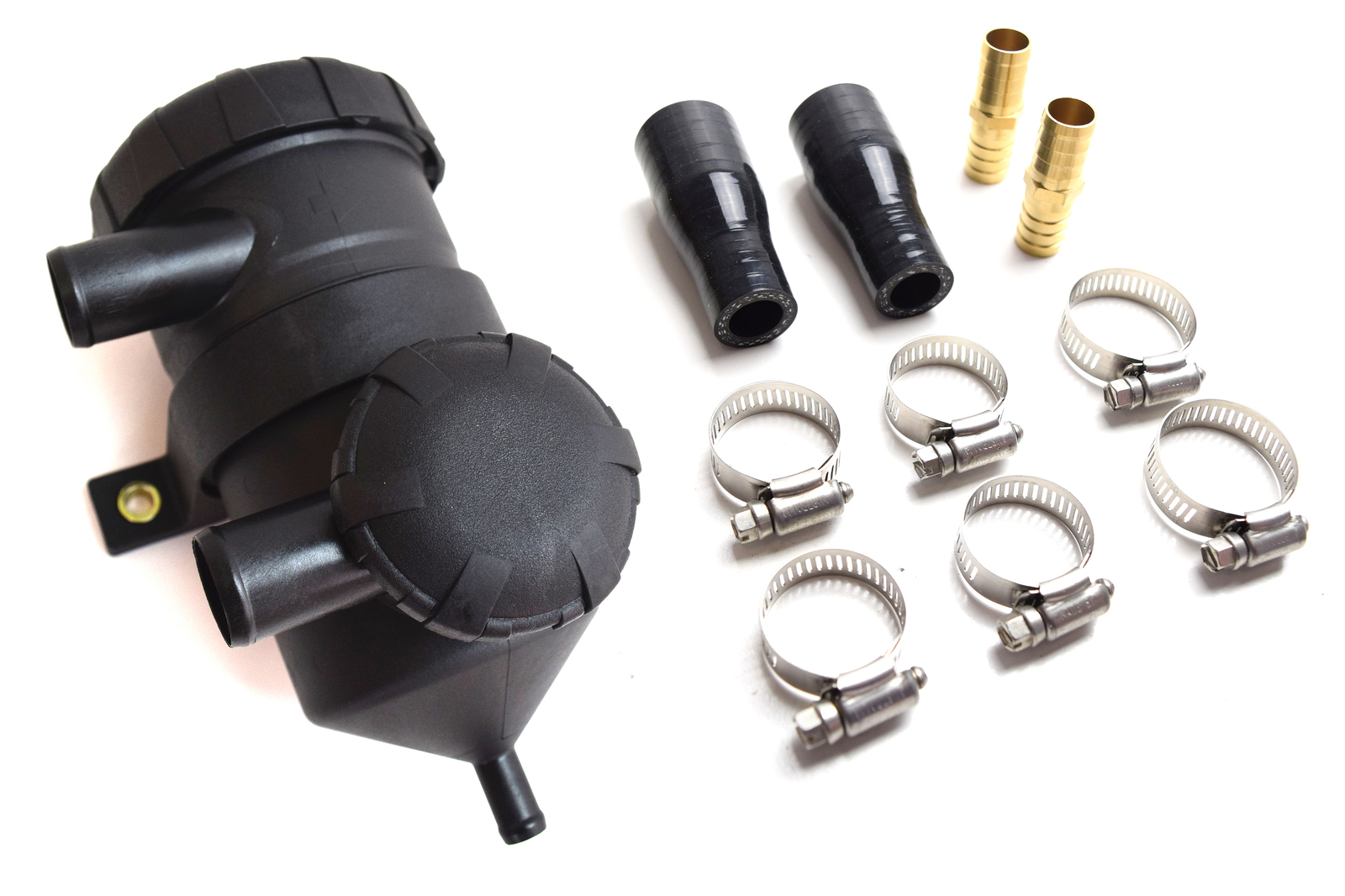probably been done to death but I'm a little bit late to the VX party.
just like to sound out my idea of a breathing system.
currently the PCV valve in the manifold is staying and will stay.
cam cover breather - fit an inline check valve to only allow this to pull in clean air through a small filter
remove timing chain inspection plug and fit m22x1.5 to -10 adapter - plumb this into a decent Raduim-type catch can with an inline tap fluid drain so I can empty. fit another check valve to the exit of the can meaning only blow-by gas can escape through another mini filter.
this would in theory increase the size of the crankcase vent when under load from 10 to 16mm (intake PCV closed, cam cover vent) and allow the oil/vapor/cappuccino mix to be collected and drained whilst still allowing fresh filtered air into the crankcase and satisfying the closed loop PCV system and idle and low load with no nasty sh*t going through the intake - the bit that will make its way in there is from the factory PCV that shuts as soon as the pressure equalises in the manifold so minimal.
how does this sound, anyone have any experience?
currently mild 180ish bhp 2.2 NA soon to be stage 2 supercharged
PS: had anyone fitted a Crank case pressure sensor to monitor engine life or have any idea of what numbers it produces under load? a set up like this should mean the CCP is always sub ambient unless there's an issue with the ring pack.
























